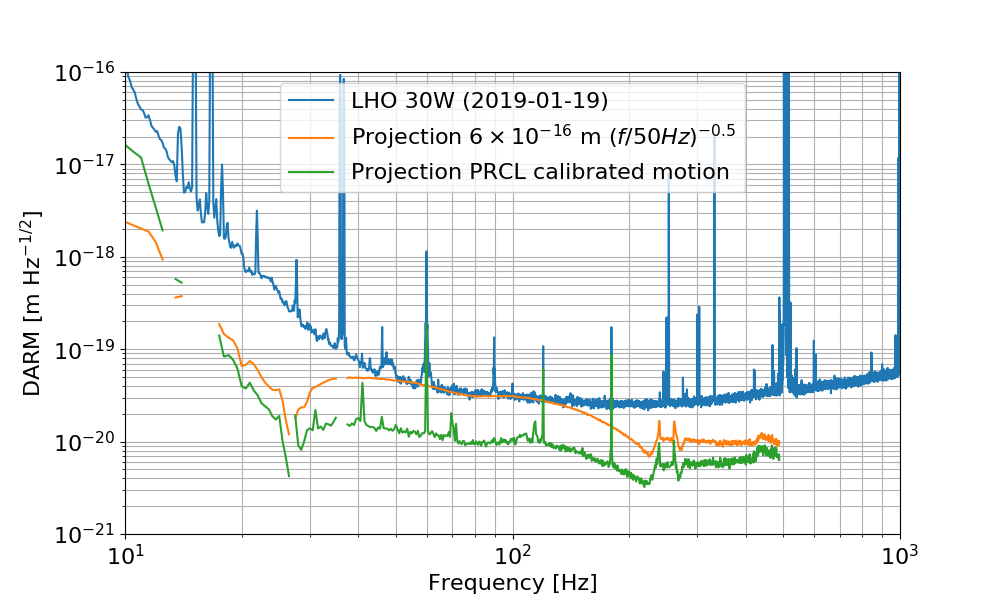Another effect of the ITM reflectivity imbalance (which also causes the arm power imbalance reported in 46817) is that PRC length noise couples more to DARM.
I used the same simulation that predicted the arm imbalance and the RIN coupling to compute the transfer function from PRCL length noise to DARM. The results are in the plot below: blue is in the ideal IFO case (matched ITMs) and orange is with the ITM values we have now.
The green dots are a measurement performed yesterday night, by injecting at the PRM bottom stage and using the CAL model actuation calibration. The measurement matches reasonably well the simulation expectation, giving a flat transfer function with a level at about 8e-5, close to the predicted 10e-5. The simulation also reproduces the notch visible in the measurement, although at a different frequency. The notch in simulation is coming from the interference between the flat coupling (due to the ITM mismatch) and the radiation pressure coupling. I'm not sure yet how to modify the simulation parameters to move this notch. This might also be due to a cross-coupling between PRCL and SRCL, that is not modeled in the simulation since there are no feedback loops.
Using the measured transfer function, we can project PRC length noise into DARM. To match the DARM noise in th 50-100 Hz region, we would need a PRC length noise of about 6e-16 m/rHz at 50 Hz, with 1/sqrt(f) slope, as shown below. I used the calibrated PRCL signal from the CAL model to check this value: the reported PRC length noise is about 10 times smaller at those frequencies. The plot below shows the projection of PRC length noise into DARM using the measured TF, both for the artificial value quoted above, and for the estimated PRC length noise.
This seems too confirm that, even though the coupling from PRC length to DARM is much higher than in a ideal case, it's not a limiting factor.



